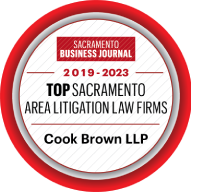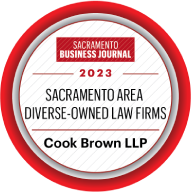Introduced, passed by both houses, and signed by Governor Newsom all in the same week, SB 95 provides a new 80 hours of supplemental paid sick leave for COVID-related purposes to virtually all California employees who work for employers with 25 or more employees, including those subject to collective bargaining agreements. As the name implies “Supplemental Paid Sick Leave” (SPSL) is in addition to existing paid sick leave requirements; therefore, employees cannot be required to use other paid/unpaid leave first or in lieu of SPSL. However, employees can be required to exhaust SPSL before receiving Cal-OSHA exclusion pay.
Reasons for Leave
Employees are entitled to SPSL if unable to work or telework because the employee is:
(A) Subject to quarantine/isolation related to COVID-19 per order / guidelines of CDPH, CDC or local health officer;
(B) Advised by health care provider to self-quarantine due to COVID-19 concerns;
(C) Attending a COVID-19 vaccination appointment;
(D) Experiencing COVID-19 vaccination symptoms;
(E) Experiencing COVID-19 symptoms and seeking diagnosis;
(F) Caring for a family member subject to (A) or (B);
(G) Caring for child whose school / care provider is closed / unavailable for reasons related to COVID-19 on the premises.
Amount of Leave
- Full-time employees and employees who are scheduled to work, on average, at least 40 hours per week for the employer in the two weeks before the date the employee took supplemental paid sick leave are entitled to up to 80 hours of SPSL.
- Part-time (or non-full-time) employees:
- If the employee has a normal weekly schedule: the number of hours the employee is normally scheduled to work for the employer over two weeks.
- If the employee works a variable number of hours: 14 times the average number of hours the employee worked each day for the employer in the six months before the first date the employee needed leave.
Terms of Leave
Governor Newsom signed SB 95 on March 19, 2021, meaning the new COVID-19 sick leave law becomes effective on March 29, 2021. However, the SPSL entitlement applies retroactively to January 1, 2021. This means that upon written or oral request by an employee, the employer must provide retroactive SPSL payment for prior uncompensated leave. For that reason, employers can also count hours of other paid leave provided to employees for covered COVID-related reasons on or after January 1, 2021, including leave provided under FFCRA, towards SPSL requirement.
An important takeaway for all employers is that the law requires the SPSL to be reported separately on paystubs, starting with the next full pay period following the effective date.
Notice Requirements
Under California law, employers are required to display the required poster in a conspicuous place that contains information about 2021 COVID-19 Supplemental Paid Sick Leave.
If an employer’s covered employees do not frequent a workplace, the employer may satisfy the notice requirement by disseminating notice through electronic means.
Payroll Tax Credit
The passage of SB 95 at the state level coincides with the passage at the federal level earlier this month of the American Rescue Plan, which extends the federal payroll tax credit established in the Families First Coronavirus Response Act (FFCRA) to September 30, 2021.
That measure increases the wages covered by the paid family leave credit to $12,000 per worker, from $10,000. Larger employers also should realize that the tax credit only applies to employers with 500 or fewer employees. The effective date of the FFCRA payroll tax credit begins after March 31, 2021. This calls into question whether leave retroactively designated under SB 95 would qualify for the payroll tax credit under the FFCRA.
SB 95’s SPSL provisions also expire on September 30, 2021.
The DLSE released FAQs on the bill found here: 2021 COVID-19 Supplemental Paid Sick Leave FAQs (ca.gov)

